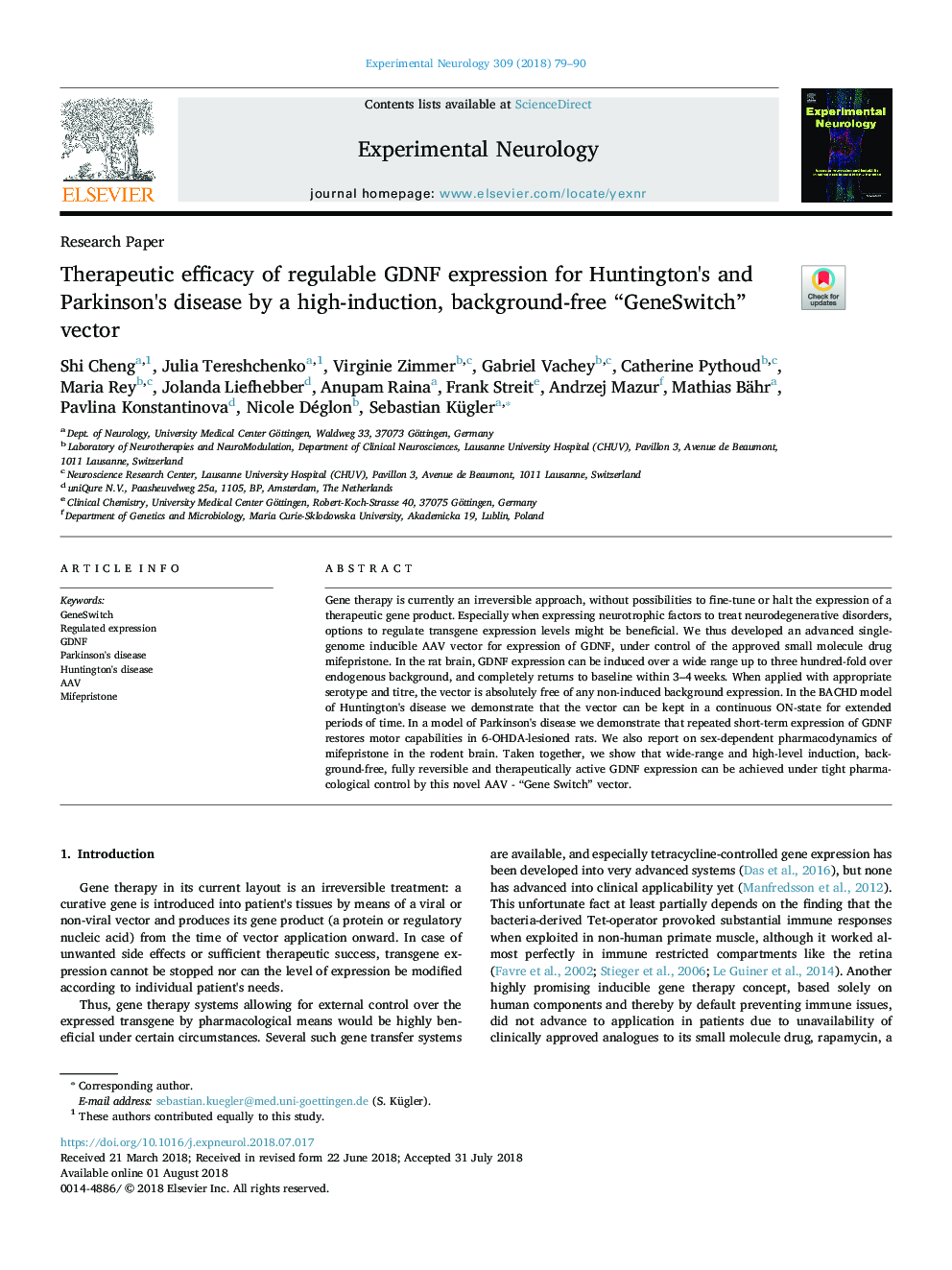| Article ID | Journal | Published Year | Pages | File Type |
|---|---|---|---|---|
| 8684522 | Experimental Neurology | 2018 | 12 Pages |
Abstract
Gene therapy is currently an irreversible approach, without possibilities to fine-tune or halt the expression of a therapeutic gene product. Especially when expressing neurotrophic factors to treat neurodegenerative disorders, options to regulate transgene expression levels might be beneficial. We thus developed an advanced single-genome inducible AAV vector for expression of GDNF, under control of the approved small molecule drug mifepristone. In the rat brain, GDNF expression can be induced over a wide range up to three hundred-fold over endogenous background, and completely returns to baseline within 3-4â¯weeks. When applied with appropriate serotype and titre, the vector is absolutely free of any non-induced background expression. In the BACHD model of Huntington's disease we demonstrate that the vector can be kept in a continuous ON-state for extended periods of time. In a model of Parkinson's disease we demonstrate that repeated short-term expression of GDNF restores motor capabilities in 6-OHDA-lesioned rats. We also report on sex-dependent pharmacodynamics of mifepristone in the rodent brain. Taken together, we show that wide-range and high-level induction, background-free, fully reversible and therapeutically active GDNF expression can be achieved under tight pharmacological control by this novel AAV - “Gene Switch” vector.
Related Topics
Life Sciences
Neuroscience
Neurology
Authors
Shi Cheng, Julia Tereshchenko, Virginie Zimmer, Gabriel Vachey, Catherine Pythoud, Maria Rey, Jolanda Liefhebber, Anupam Raina, Frank Streit, Andrzej Mazur, Mathias Bähr, Pavlina Konstantinova, Nicole Déglon, Sebastian Kügler,
